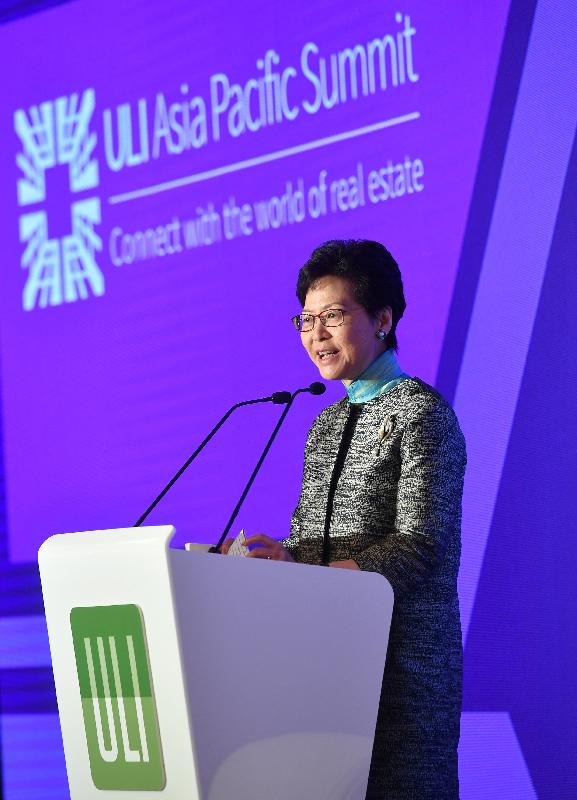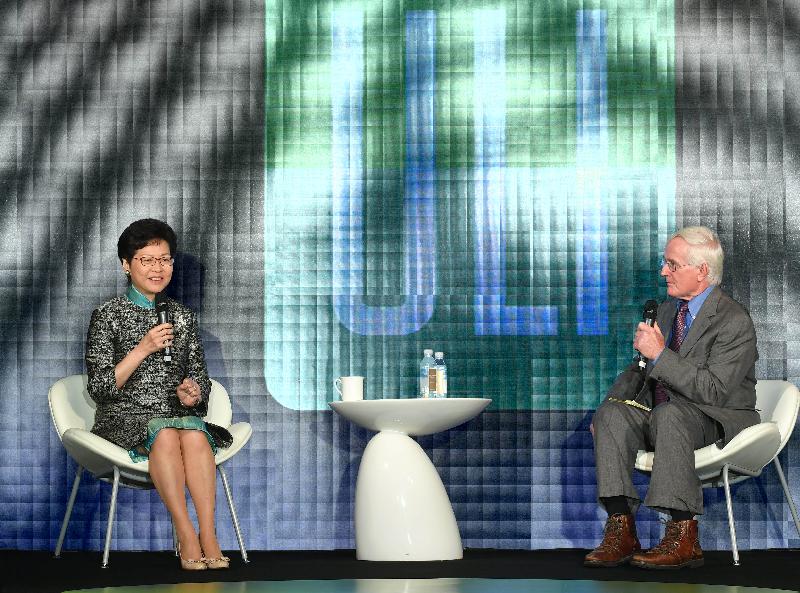LCQ18: Government’s emergency response and preparedness for typhoons and natural disasters
Following is a question by the Hon James To and a written reply by the Secretary for Security, Mr John Lee, in the Legislative Council today (June 6):
Question:
Last year, five typhoons of tropical cyclone warning signal No. 8 or above struck Hong Kong and, among them, two typhoons respectively called Hato and Pakhar inflicted particularly serious damages. Some scientists have pointed out that global climate change will lead to increasingly frequent occurrence of extreme weather conditions (including typhoons). In this connection, will the Government inform this Council:
(1) given that during the passage of Hato through Hong Kong, seawater surged into coastal areas such as Heng Fa Chuen, Siu Sai Wan and Cheung Chau, causing flooding and serious damages, whether the Government will install more facilities for preventing flooding caused by storm surge at those coastal areas that are vulnerable to storm surge; if so, of the details; if not, the reasons for that;
(2) of the areas where the stormwater collection systems currently have inadequate drainage capacity (set out by District Council district), and whether the Government has plans to carry out improvement works to the stormwater collection systems in those areas;
(3) given that after the onslaught of Hato and Pakhar, large quantities of rubbish and other objects were found adrift in inshore waters at a number of locations across the territory and affected environmental hygiene, whether the Government will consider making it a standing arrangement to deploy workers to clean up the inshore waters and carry out disinfection after the onslaught of a typhoon; if so, of the details; if not, the reasons for that;
(4) whether the Government currently stockpiles supplies and food in preparation for the needs during a natural disaster; if so, of the types of such stockpiled items and food, and for how many days the stockpiled quantities can meet the needs of Hong Kong residents; if not, the reasons for that;
(5) given that the Macao Government held a large-scale drill on typhoon response in April this year, whether the Government currently has any plan to conduct a similar drill; if so, of the details; if not, whether the Government will consider conducting a similar drill in view of the possibility of increasingly frequent occurrence of extreme weather conditions; and
(6) under what circumstances the Government will request the Central Government to direct the People's Liberation Army Hong Kong Garrison to assist in disaster relief and recovery efforts?
Reply:
President,
Hong Kong's geographical position makes it susceptible to weather-related threats such as tropical cyclone (TC), rainstorm and storm surge. Such threats are expected to increase in frequency and severity as extreme weather becomes more likely while climate change goes drastic. The Government maintains a Contingency Plan for Natural Disasters (CPND), which sets out the Government's alert system and organisational framework for responding to natural disasters including TCs, as well as the functions and responsibilities of Government departments and other organisations. The weather warning system, emergency response and delineation of responsibilities as laid out in the CPND are generally effective. The response procedures are well defined, ensuring prompt activation of departmental actions. The weather forecast and warning systems are based on a scientific foundation and properly administered. Departments and auxiliary services responsible for emergency rescue and relief have been professional and effective in discharging their duties. In consultation with the relevant departments, I reply to the various parts of the question as follows:
(1) As regards sea flooding in the coastal areas during TCs, various departments have measures in place. After the Severe Typhoon Hagupit in 2008, the Government has identified several locations vulnerable to sea flooding and established an early alert system with a view to alleviating the impact of sea flooding on the local residents. The Drainage Services Department (DSD) has formulated action plans for these locations and carried out relevant works. The action plans mainly involve deployment of teams to handle flooding, provision of temporary pumping facilities and carrying out temporary flood-proofing measures. Meanwhile, the Government has carried out works of rock-armoured bund, concrete walls, gabion walls and water-stop boards in several locations to alleviate the impact of the land being directly inundated by sea water and enhance the protection to the public.
(2) The public stormwater drainage systems in Hong Kong are planned and designed in accordance with flood protection standards. DSD has completed a number of flood prevention projects in various areas over the territory in the past. With the commissioning of these drainage trunk systems, flooding situations in urban areas, New Territories North and Northwest, etc. have been significantly improved. To cope with the needs of future development in various districts and having regard to the impact of climate change, since 2008, DSD has initiated reviews of the efficacy of stormwater drainage systems in all districts, and planned and carried out relevant works as required. All these works have been planned, designed and constructed according to the said flood protection standards and taking into account the impact of climate change.
(3) Regarding the clearance of marine refuse, the Marine Department will mobilise its staff to strengthen patrols in regions likely to be affected as soon as possible once being notified under the notification and alert mechanism on marine refuse developed by the Environmental Protection Department, and deploy resources to clean up marine refuse where necessary.
(4) As for relief related to natural disasters, the Government has put in place the CPND which sets out that in case of major natural disasters or such disasters are assessed to be probable, where widespread damages will be done to Hong Kong, the Security Bureau (SB) will activate the Emergency Response System and the said CPND. The Social Welfare Department (SWD) will provide food or cash and other relief items to victims in need at the disaster scenes or temporary shelters. In emergencies, SWD may also liaise with four hospitals under the Hospital Authority to provide meals to these victims. Besides, as rice is a staple food in Hong Kong, the Government has devised the Rice Control Scheme under the Reserved Commodities Ordinance to ensure a stable supply of rice and to keep a reserve stock sufficient for consumption by the population for a reasonable period of time to cater for emergencies or any short term shortage of supply.
(5) In respect of exercises, in fact, various emergency departments and agencies of Hong Kong will put in place typhoon contingency plans prior to typhoon seasons. They will also conduct response exercises for major incidents or natural disasters in Hong Kong from time to time. In these exercises, weather deterioration and typhoon attacks in Hong Kong will be simulated to test the departments' contingency plans, with a view to strengthening officers' responsiveness and coordination capabilities in response to major disasters for protecting the life and property of the citizens. Moreover, SB convened its annual Inter-departmental Risk Assessment and Preparation Meeting in April this year. At that meeting, relevant departments and agencies reported on their pre-typhoon risk assessment and reduction work as well as their corresponding preparedness programmes, which include in-house drills and staff briefings, departmental contingency plan review, liaison with other departments and precautionary works programme against flooding. In May, SB also held an inter-departmental table-top exercise in which various extreme weather conditions caused by TCs were simulated. The exercise aims to ensure that all the participating departments understand their own and each other's roles and responsibilities in order to enhance their preparedness and the communication and collaboration among them.
(6) Under Article 14 of the Basic Law, the Government of the Hong Kong Special Administrative Region (HKSAR Government) may, when necessary, ask the Central People's Government for assistance from the garrison in the maintenance of public order and in disaster relief. That said, the HKSAR Government is fully confident of its experience, deployment and capability. The Government is capable to effectively perform disaster relief and recovery work. The Government has put in place a CPND which sets out comprehensive emergency response arrangements in case of natural disasters. In terms of rescue, recovery and restoration of normal operation of society, all government departments and ancillary units have accumulated considerable experience, and as demonstrated in various disastrous incidents, they have the ability to respond to the damages caused by major natural disasters in a professional, timely and effective manner. Looking ahead, all departments will keep enhancing their equipment and training for major natural disasters and from time to time, review their disaster relief strategies and arrangements. The HKSAR Government is confident and capable of performing disaster relief work in the future.

